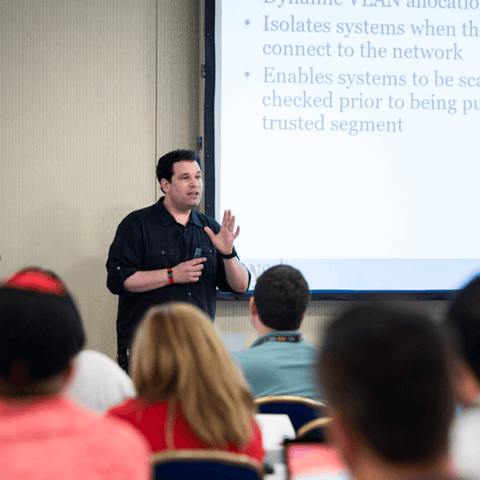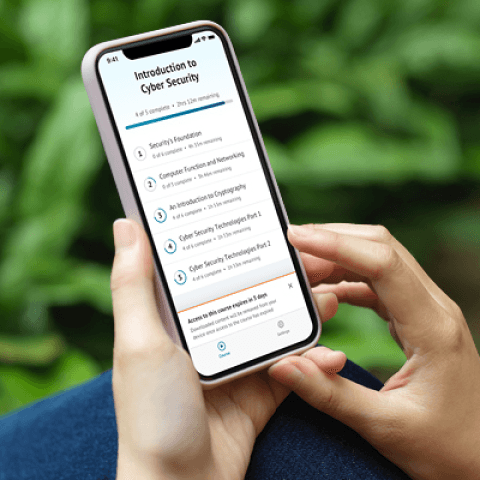SEC595: Applied Data Science and AI/Machine Learning for Cybersecurity Professionals


Experience SANS training through course previews.
Learn MoreLet us help.
Contact usBecome a member for instant access to our free resources.
Sign UpWe're here to help.
Contact Us
Apply your credits to renew your certifications
Attend a live, instructor-led class at a location near you or remotely, or train on your time over 4 months
Apply what you learn with hands-on exercises and labs
SEC301 introduces cybersecurity fundamentals for non-technical professionals, empowering them to understand risks, terminology, and best practices to support security in any role.
It's a very good course if you need the basic foundation. It's a very helpful class to take because it expands on some basic concepts.
This course is designed for cyber-adjacent professionals, managers, HR, legal, auditors, and other non-technical roles who need a strong foundation in cybersecurity fundamentals. Through engaging instruction and relatable examples, this course builds confidence in key areas like threats, risks, defenses, and cyber hygiene. Whether you're supporting a security team, shaping policy, or guiding business decisions, SEC301 helps you understand the language of cybersecurity and your role in protecting the organization. No technical experience required just curiosity and a desire to be cyber smart.
This course also prepares you to earn the GISF certification (GIAC Information Security Fundamentals), a globally respected credential that validates your understanding of essential cybersecurity concepts.


Rich is a seasoned cybersecurity professional with over two decades of experience in the cyber domain. He has participated in offensive and defensive cyber operations for the Department of Defense (DoD) in more than 17 countries.
Read more about Rich GreeneExplore the course syllabus below to view the full range of topics covered in SEC301: Introduction to Cyber Security.
Section 1 covers core security principles, including the Principle of Least Privilege and the CIA triad. You'll learn key concepts like risk management, OS functions, mobile security, and the impacts of IoT and AI. You'll also gain skills in file manipulation, value conversion, and system knowledge for both Windows and Linux.
Section 2 dedicates a full day to cryptography, covering key concepts without delving into the math. You'll learn cryptographic terms, historical examples, and modern encryption methods. Topics include symmetric and asymmetric cryptography, Diffie-Hellman, email encryption, VPNs, and PKI, focusing on practical applications.
In Section 3, you’ll explore authentication systems, creating strong but memorable passphrases, using password managers, and understanding password cracking. You'll learn about token-based and biometric authentication. The day also covers Windows and Linux permission management, and networking basics with protocols like IP, TCP, and DNS.
Section 4 explores wireless network security, focusing on Wi-Fi and Bluetooth standards, their vulnerabilities, and improvements. You'll dive into social engineering tactics like phishing and learn defense strategies. The section covers network attacks, malware types, and countermeasures like anti-malware and firewalls.
In Section 5, you'll learn about key security technologies like firewalls, IDS/IPS, sniffers, and ethical hacking. This section covers browser and web security challenges, and teaches common browser security features. It concludes with system security, including OS hardening, patching, cloud computing, and backups.
Ensures systems and software security from development to maintenance by analyzing and improving security across all lifecycle phases.
Explore learning pathOversees full lifecycle of information systems from design through evaluation, ensuring alignment with functional and operational goals.
Explore learning pathOversees a portfolio of IT capabilities aligned to enterprise goals, prioritizing needs, solutions, and value delivery to the organization.
Explore learning pathResponsible for operating an information system at an acceptable level of risk to organizational operations, organizational assets, individuals, other organizations, and the nation.
Explore learning pathResponsible for managing the Communications Security (COMSEC) resources of an organization.
Explore learning pathManages support resources and readiness for system components, ensuring operational capability through lifecycle logistics and maintenance.
Explore learning pathDesigns secure enterprise systems considering environmental constraints and translates them into enforceable security processes and protocols.
Explore learning pathResponsible for developing and conducting cybersecurity awareness, training, or education.
Explore learning pathResponsible for managing and administering processes and tools to identify, document, and access an organization’s intellectual capital.
Explore learning pathResponds to and investigates network cyber incidents, performing analysis to mitigate threats and maintain cybersecurity in enclave environments.
Explore learning pathEvaluates IT programs for compliance, identifying gaps and ensuring conformance with published tech and security standards and policies.
Explore learning pathManages product development, coordinates cross-functional teams, and guides strategy, resources, and releases across product lifecycle phases.
Explore learning pathMonitors cyber defense tools like IDS and logs to analyze network events, identifying and mitigating potential threats to security environments.
Explore learning pathResponsible for developing and overseeing an organization’s privacy compliance program and staff, including establishing and managing privacy-related governance, policy, and incident response needs.
Explore learning pathAdd a GIAC certification attempt and receive free two practice tests. View pricing in the info icons below.
When purchasing a live instructor-led class, add an additional 4 months of online access after your course. View pricing in the info icons below.
SEC301 was my first SANS course, and I was not disappointed! Keith was exceptional in presenting this information in a clear and concise manner. He took the time to really explain concepts and challenged us to think things through. I learned a great deal and look forward to future SANS events.
SEC301 is the only course of its kind. Every IT professional knows that your knowledge from networking to security is contiguous, and this is the only course I've seen that actually teaches both equally.
I never knew anything about cryptography and its complexities. This course is opening my eyes to how important it is!
As usual, SANS courses give incredible insight into the reality of the threats that are present in the cyber world. With SEC301, I have a better understanding of each threat, and the means to mitigate those threats.

Get feedback from the world’s best cybersecurity experts and instructors

Choose how you want to learn - online, on demand, or at our live in-person training events

Get access to our range of industry-leading courses and resources